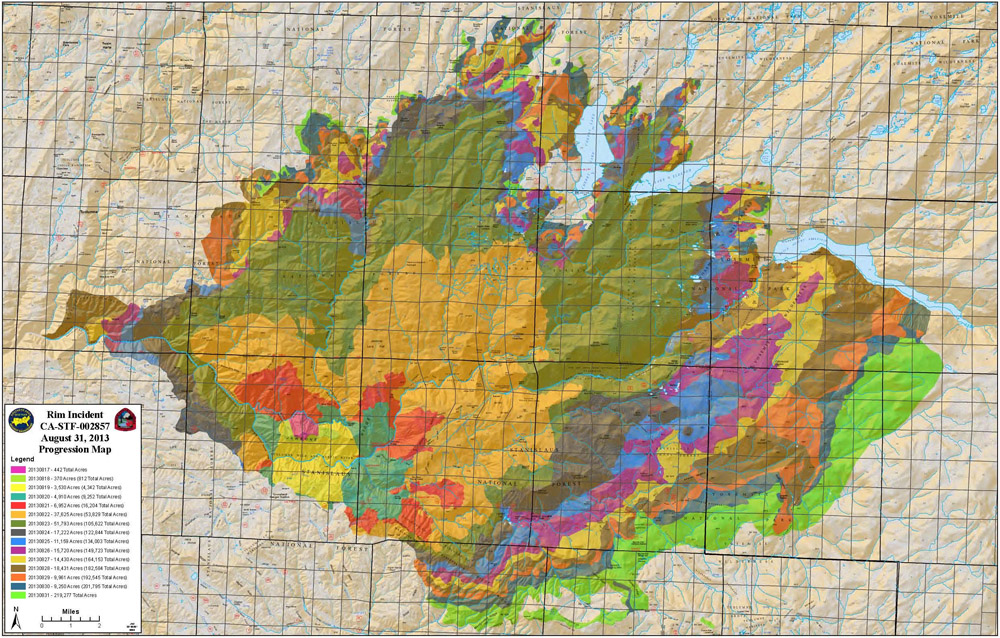Statistics are frightening: it is said that the progression of the Rim fire into Yosemite National Park is the fourth largest in the history of the United States.
The fire has been considered strong, steady, and scary, and it has been fueled by an exceptionally dry winter in California. This map shows the growth, with each color representing the area burned each day up to August 31st.
 Photo courtesy of wired.com
Photo courtesy of wired.com
What to Expect Now?
Some areas of Yosemite may be radically altered after this, entering entire new ecological states. Yet others may be restored to historical conditions that prevailed for thousands of years from the last Ice Age’s end until the 19th century, when short-sighted fire management disrupted natural fire cycles and transformed the landscape.
In certain areas, “you could absolutely consider it a rebooting, getting the system back to the way it used to be,” said a fire ecologist from Northern Arizona University. “But where there’s a high-severity fire in a system that wasn’t used to having high-severity fires, you’re creating a new system.”

